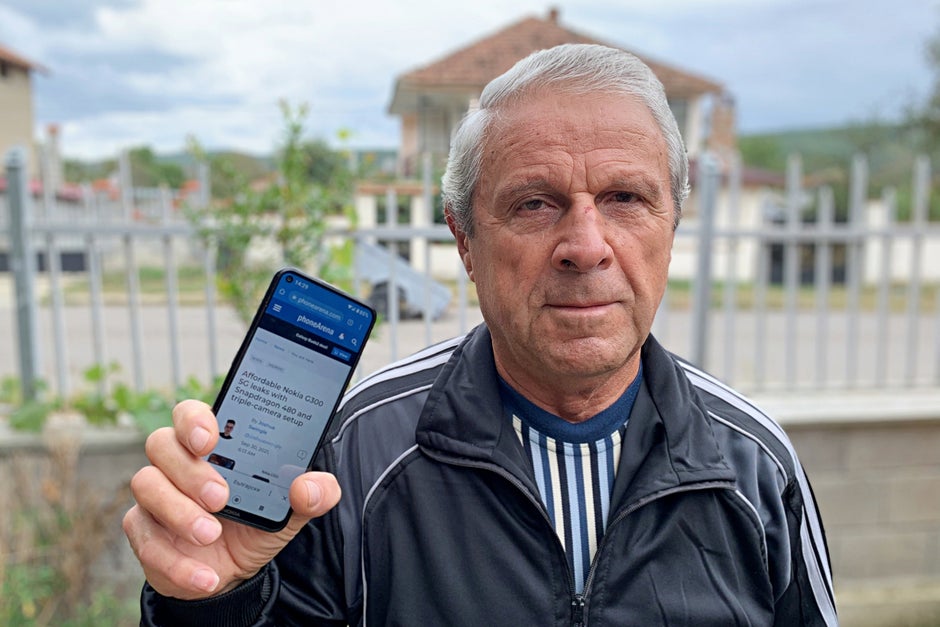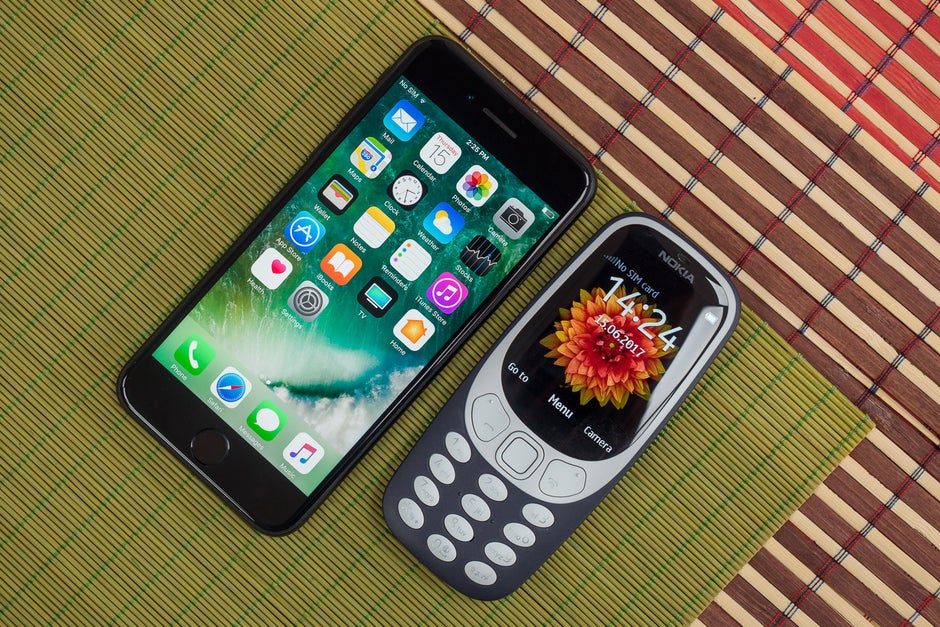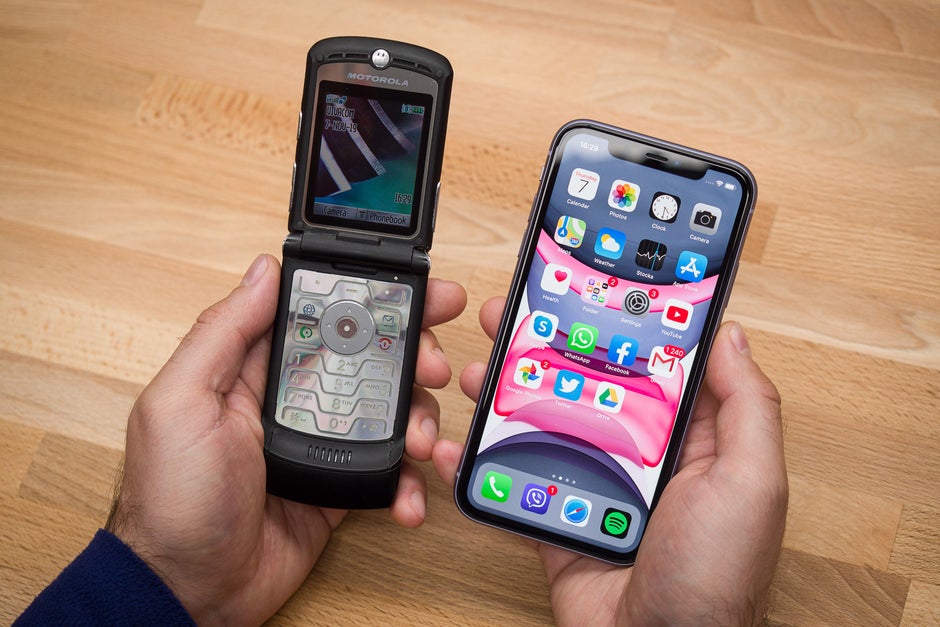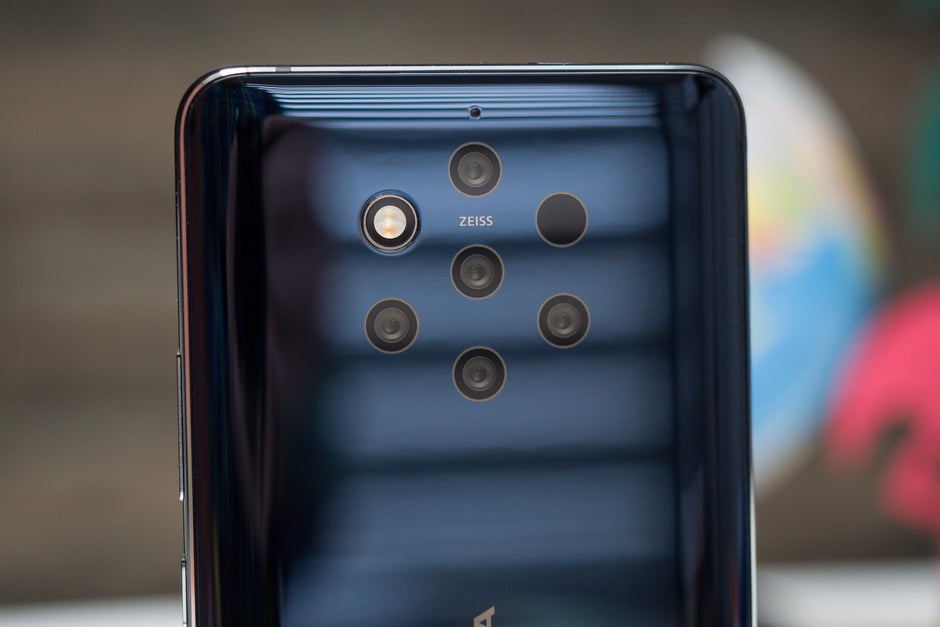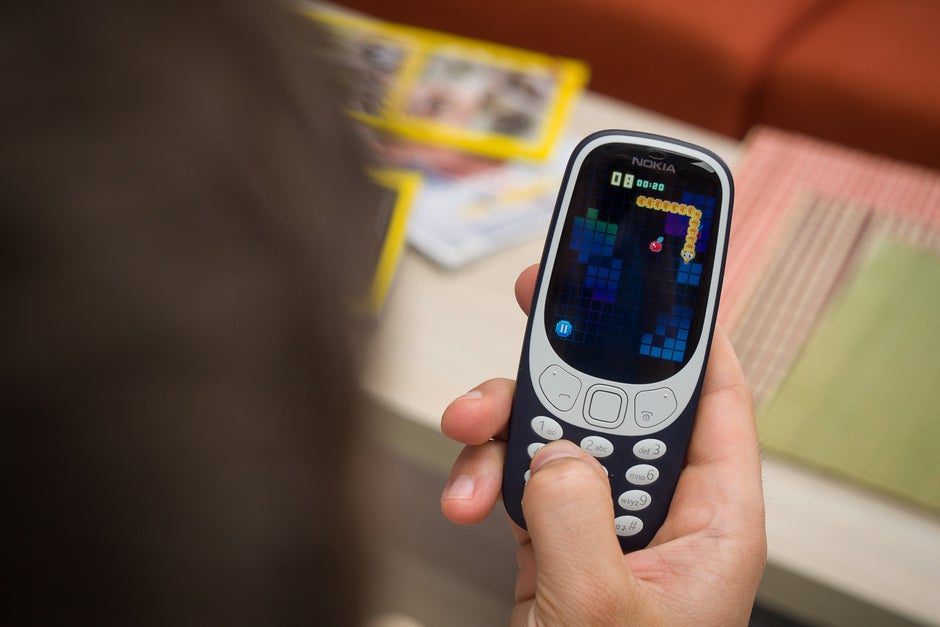I gave my 75-year-old grandpa his first smartphone: here’s what happened

Nowadays, almost everyone has had a smartphone for quite some time. The smartphone revolution caused by the first iPhone and Android phones took the world by storm, and it is clear there is no turning back to classic phones.
And while the Nokia days are gone, many seniors likely use tiny classic phones with small rubber keyboards and monochrome displays. Before the 2010s, such phones ruled the world, and everyone born in the 20th century needed to learn to use them, including seniors.
This was the case with my grandfather too, who is 75 years old. He has been stuck with his basic, non-smart Nokias since forever. Actually, I don’t remember him using phones from other brands at all. This way he didn’t need to learn how to use a new interface.
But unfortunately, his carrier left him no choice but to switch to a phone with at least 3G connectivity, as it had problems with its 2G network coverage for weeks before the switch. The lack of 2G network coverage meant that my grandfather’s ancient Nokia no longer worked, with no reception in his particular location and no way of knowing when the problem would be fixed.
This is when I offered him a modern Android phone. I explained to him that this way he would finally have reception. He immediately jumped at the opportunity and even shared with me that he had been planning on finally learning how to use a smartphone for quite some time, but he put it off because his phone worked just fine.
I gave him a brand new Nokia 3.4, which had been lying around from a contract I signed. Of course, the reception on this phone was perfect, it was always connected to the 4G network. But this is where things started to get interesting. I had my doubts if he’s going to be able to figure out how to work a modern Android smartphone. That is why at the end of each day, I asked him what he’s struggling with and what were his impressions of the phone.
I decided to describe in this article every major problem this 75-year-old man had with a modern smartphone: what was hard for him to learn, what he’s still struggling with, and how manufacturers can make these devices more senior-friendly.
Isn’t there an ‘easy mode’ or something?
This is the first thing my grandfather asked me after I set his phone up. My 75-year-old grandpa, who had never used a smartphone in his life, held the 6.39-inch piece of plastic and couldn’t figure out anything displayed on his screen. Most of you probably know what it is to have a new phone and use it for the first time. There are all of these pop-ups, suggestions for tips and tricks, settings to accept, which are very confusing for the first-time smartphone user.He struggled with the most basic things like finding where the app drawer is, how to check the weather, or even how to make a call. I’d explained to him that modern phones display almost everything via text on their screen, and he should read what the phone is showing. The idea that a text can be a button is still to this day very confusing to him.
This is when he simply asked me “isn’t there an easy mode or something for people like me”. The fact that there isn’t such a thing in most modern smartphones was something that I have never thought about before. Samsung offers an Easy Mode, which is helpful, but most of the other manufacturers do not offer such a thing. Realizing that actually made me sad, and a bit angry with Google and Apple, as they influence what is or isn’t included in the modern smartphone’s software. I will go as far as to say that as a tech journalist, I felt ashamed that we, the people who write about phones every day, have forgotten about this big social group – our parents and grandparents. We’ve never called out big brands on this matter, I guess we never really cared or knew how big of a problem this is to some.
Of course, I immediately made the Nokia 3.4 as grandpa-friendly as I could. This included maximizing the text size, turning every input sound on, and making sure only the apps that he needs are present on his home screen. I also slowed down the animations via developer options, making it easier for him to track what’s happening on the screen. But still, all of this couldn’t solve the “no easy mode” issue. If such a mode is introduced to iOS and stock Android’s interfaces, I imagine it will do all these things automatically, and hopefully much more.
How do I answer the phone?
Yes, guys, this was a real issue my 75-year-old grandpa had with the modern smartphone. Understanding that you need to swipe up or down to answer a call was much harder than I thought it would be. There were plenty of times where he accidentally declined a call or couldn’t answer or decline it at all. Swiping an icon in order to answer is still something that feels unnatural to him. And even though after weeks of using the phone he has pretty much figured out how to call and answer a call, there are still occasions when I call him and he accidentally declines or doesn’t answer at all. On these occasions, he always calls me back, which is an operation that was actually easier for him to learn than the much simpler-sounding call receiving.This wasn’t the only call-related problem my grandfather had. He is still struggling with creating a new contact. The icon in the call app for the numeric keypad isn’t recognizable enough for him, which makes it difficult to find. Also, he isn’t used to this way of creating a contact, as it is way more complicated compared to his previous phone. The options you are given by the operating system when saving a contact are way too many and make the process hard and very frustrating. Eventually, he learned how to make a new contact, but he still struggles to do it successfully with his first try.
My 75-year-old grandfather asked me another surprising question that I did not expect: “How do I turn off my phone?” This smartphone command is something that I have never thought of before. For us, the younger generations, it is common knowledge that every phone is turned off by holding its power button or its power and volume up or volume down buttons together. Thank God his phone turns off by holding only the power button.
I explained which button turns the phone off, let him try, and immediately there was another obstacle. The phone didn’t turn off, as it presented him with three new options! Of course, he straight away asked me “what is that, did I do something wrong?”, to which I responded by telling him to remember what I told him earlier about reading what the phone says and text often being a button. He read what the newly appeared options were and hesitantly chose the right one. Unsurprisingly, this was followed by the question of how to turn it back on, but at least this process is very similar on every phone that ever existed, requiring you to hold a single button.
How do I take a picture, and why is it so confusing?
When asked how to take a picture, I showed my grandpa the camera app, and he had mixed feelings about it. Unlike most of the apps, here the buttons were more in the shape of symbols rather than text, which confused him again. The Nokia 3.4 has a second ultrawide camera, which my grandpa has never used. He figured out how to take a simple photo with the back camera, but going into video mode or taking a selfie is something he still isn’t up to. That’s both because it is more complicated for him, especially considering he’s never had a single camera phone, let alone one with three in total, and also because he’s just not very interested in recording videos or taking selfies.
Speaking of pictures, another thing that was hard for him to learn was to see the photos he captured. It took my grandpa a while to remember how to access the photos he made from the camera app. The native gallery, which is Google Photos, was easier for him to remember. But the app itself isn’t the easiest to work with, as there were more obstacles when looking through his photos. For example, he said to me that when he opens a photo, he is presented with a lot of options, and he doesn’t know what they are for. Just like the camera app, Google Photos is full of symbols instead of text buttons, and he would often go into editing or sharing an image by mistake.
Notifications are also something that he doesn’t understand. He finds that most of these put extra complexity to his smartphone experience. Google Photos notifications confused him the most, with him mistakenly thinking they mean there is something wrong with the photos he took. Other apps like Google Chrome also bothered him with notifications, so I finally decided to turn all of his apps’ notification permissions off.
My phone lasts me at least 7 days, why did you lie to me?
This is the most shocking thing I’ve heard my grandfather tell me about his smartphone journey. I even believe that this might be the most mind-blowing thing I have heard from anyone about a smartphone!
See, when I gave him the Nokia 3.4, I warned him that modern smartphones do not last as long as classic phones. I explained that with his usage, which of course is low, his new phone should last about 3 to 4 days, maybe 5 if he’s lucky. And then, after two weeks or so, he comes and tells me that he doesn’t understand why we are always charging our phones when his lasts at least a week.
I didn’t believe him at first. I thought he probably forgets when he charges his 4,000mAh Nokia smartphone battery. I picked up his phone, went into the battery management settings, and oh my God, he was telling the truth! His Nokia 3.4’s last charge was 8 days ago, and its battery was currently at 22%. Yes, 22%! I am lucky if my iPhone gets me through the day. My phone lasting a week sounds like an impossible task.
Of course, there are reasons his Nokia 3.4 performs so well in terms of battery life. He uses it mostly to make calls, to browse the internet for 10 to 30 minutes a day, and then leaves it be. He also doesn’t have cellular data in his plan yet, so this setting is always off. But not everything is off. His Wi-Fi is always on and his brightness is often on the highest setting.
Other things that improve this phone’s battery life are the small number of installed apps and Nokia’s software optimization. I want to applaud Nokia for doing such a nice job with the software optimization on an entry-level phone, without which this device would’ve probably lasted half a week tops.
Conclusion: the back button is your best friend
At the beginning of my grandfather’s journey with the modern smartphone, I knew it was going to be hard for him to understand how these devices work, and even harder to remember what he was taught. That’s why the first thing I told him when he started using the phone was “the back button is your new best friend”. I told him not to worry about doing something wrong or getting lost across the many features an Android phone has, the back button will always take him back to where he started.
Maybe you are wondering why I told him to use the back button instead of the home one. Well, the home button is just going to be one more thing for him to remember. Also, by going back, your phone does not keep the apps you’ve opened running in the background while hitting the home button does. Imagine trying to teach a 75-year-old man having his first-ever smartphone experience about multitasking, especially considering how much more there was to learn already.
I hope that one day we will see smartphones getting easier to understand by users of any age. Software developers should start pitching ideas on helpful modes for first-time smartphone users. And it’s not only about understanding the phone. It’s also about it’s ease of use. Some seniors aren’t physically suited to type on a small touch screen keyboard.
But I understand why this group of people doesn’t concern phone manufacturers enough. After all, generations change, and with every new generation, an older one passes away, which means that no matter what, one day there won’t be a generation left that isn’t used to smartphones. I know this sounds sad, but it is the truth, and while we wait for a software solution that might never come, pump up your grandparents’ phone text size, turn off the stuff they don’t use, and tell them the back button is their new best friend.
For all the latest Technology News Click Here
For the latest news and updates, follow us on Google News.


